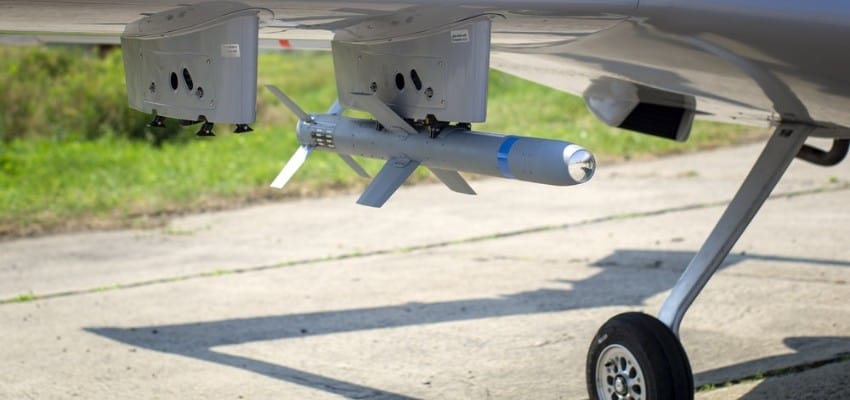|
|
Content Assessment: Bearing Down in the East? Ukraine Conflict Assessments in Maps (April 16 – 18, 2022)
Information - 96%
Insight - 95%
Relevance - 91%
Objectivity - 92%
Authority - 94%
94%
Excellent
A short percentage-based assessment of the qualitative benefit of the post highlighting the recent Ukraine conflict assessments in maps from the Institute for the Study of War.
Editor’s Note: One of the most accurate and detailed sources for ongoing updates on the Ukraine crisis is the Ukraine Conflict Update from the Institute for the Study of War. The Institute for the Study of War (ISW) is a 501(c)(3) organization and produces strictly non-partisan, non-ideological, fact-based research. ISW seeks to promote an informed understanding of war and military affairs through comprehensive, independent, and accessible open-source research and analysis. ISW’s research is made available to the general public, military practitioners, policymakers, and media members. Providing a daily synthesis of key events related to the Russian aggression against Ukraine, ISW updates may benefit cybersecurity, information governance, and legal discovery professionals as they follow the business, information technology, and legal trends and trajectories impacted by and stemming from the current Ukraine conflict.
Assessment and Maps*
Ukraine Conflict Assessments – An Overview in Maps
- Institute for the Study of War (ISW), Russia Team
- Critical Threats Project (CTP), American Enterprise Institute
General Assessment Background Info
- ISW systematically publishes Russian campaign assessments that include maps highlighting the assessed control of terrain in Ukraine and main Russian maneuver axes.
- These maps augment daily synthetic products that cover key events related to renewed Russian aggression against Ukraine.
Russian Offensive Campaign Assessment on April 18, 2022
Extract (Mason Clark, George Barros, Kateryna Stepanenko, and Karolina Hird)
Russian forces began a new phase of large-scale offensive operations in eastern Ukraine on April 18 likely intended to capture the entirety of Donetsk and Luhansk oblasts. Russian forces have been concentrating reinforcements—including both newly-deployed units and damaged units withdrawn from northeastern Ukraine—to the Donbas axis for several weeks. Russian forces conducted large-scale assaults focused on Rubizhne, Popasna, and Marinka with heavy artillery support on April 18 after previously conducting only localized attacks and shelling along the line of contact. Russian forces have not secured any major territorial gains as of publication.
The Russian offensive in the east is unlikely to be dramatically more successful than previous Russian offensives, but Russian forces may be able to wear down Ukrainian defenders or achieve limited gains. Russian forces did not take the operational pause that was likely necessary to reconstitute and properly integrate damaged units withdrawn from northeastern Ukraine into operations in eastern Ukraine. As we have assessed previously, Russian forces withdrawn from around Kyiv and going back to fight in Donbas have, at best, been patched up and filled out with soldiers from other damaged units, and the Russian military has few, if any, cohesive units not previously deployed to Ukraine to funnel into new operations. Frequent reports of disastrously low Russian morale and continuing logistics challenges indicate the effective combat power of Russian units in eastern Ukraine is a fraction of their on-paper strength in numbers of battalion tactical groups (BTGs). Russian forces may certainly be able to wear down Ukrainian positions in eastern Ukraine through the heavy concentration of firepower and sheer weight of numbers, but likely at a high cost. A sudden and dramatic Russian offensive success remains highly unlikely, however, and Ukrainian tactical losses would not spell the end of the campaign in eastern Ukraine, much less the war as a whole.
Key Takeaways
- Russian forces likely began large-scale offensive operations in Donetsk and Luhansk oblasts focused on Rubizhne, Popasna, and Marinka.
- Russian forces may be able to gain ground through the heavy concentration of artillery and numbers. However, Russian operations are unlikely to be dramatically more successful than previous major offensives around Kyiv. The Russian military is unlikely to have addressed the root causes—poor coordination, the inability to conduct cross-country operations, and low morale—that impeded prior offensives.
- Successful Ukrainian counterattacks southeast of Kharkiv will likely force Russian forces to divert some units intended for the Izyum offensive, but Ukrainian forces are unlikely to completely sever Russian lines of communication north of Izyum in the coming days.
- Ukrainian defenders in Mariupol continued to hold out against heavy Russian artillery and air bombardment.
Russian authorities face mounting unwillingness to fight among both conscript and contract personnel. The Ukrainian General Staff reported on April 18 that Russian forces began efforts to form additional units in Rostov and Crimea by April 24 to form a “second echelon” to occupy administrative buildings and important infrastructure in occupied Ukraine. Ukraine’s Main Military Intelligence Directorate (GUR) reported on April 18 that the number of Russian personnel refusing to join the war effort is increasing, including 60-70% of contract soldiers in the 150th Motor Rifle Division of the 8th Combined Arms Army—the primary Russian combat force in eastern Ukraine. The GUR stated that Russian authorities are threatening the families of servicemen who refuse to fight and making permanent marks in the criminal records of those servicemen.
Russian cruise missiles struck a Ukrainian vehicle repair shop in Lviv, western Ukraine, killing civilians in Lviv for the first time in the war. Social media users depicted several missiles striking a warehouse and railway junction in Lviv and killing several civilians on April 18. The Russian Ministry of Defense claimed that Russian forces destroyed a logistics center in Lviv used to store weapons arriving in Ukraine from the United States and European Union on April 18. Russian forces seek to disrupt western aid shipments to the Ukrainian military but likely lack large numbers of the precision weapons needed to frequently strike these targets in western Ukraine.
We do not report in detail on Russian war crimes because those activities are well-covered in Western media and do not directly affect the military operations we are assessing and forecasting. We will continue to evaluate and report on the effects of these criminal activities on the Ukrainian military and population and specifically on combat in Ukrainian urban areas. We utterly condemn these Russian violations of the laws of armed conflict, Geneva Conventions, and humanity even though we do not describe them in these reports.
Ukraine Conflict Maps - 041622-041822
Read the latest Ukraine Conflict updates from the Institute for the Study of War
* Shared with direct express permission from the Institute for the Study of War (ISW).
About the Institute for the Study of War Research Methodology
ISW’s research methodology relies on both primary and secondary sources, enabling researchers to develop a comprehensive understanding of the situation on the ground. In order to analyze military and political developments in any given area, ISW’s research analysts must wholly understand the systems of enemy and friendly forces. They must also understand the population demographics, physical terrain, politics, and history of that area. This lays the analytical foundation for understanding the reasons for particular developments and fulfilling their assigned research objectives. ISW analysts also spend time in places like Iraq, Afghanistan, and elsewhere in order to gain a better understanding of the security and political situation and to evaluate the implementation of current strategies and policies. Our researchers compile data and analyze trends, producing a granular analysis of developments in areas of research, producing an accurate, high-resolution, timely, and thorough picture of the situation. ISW’s research methodology guarantees its success and commitment to improving the nation’s ability to execute military operations, achieve strategic objectives, and respond to emerging problems that may require the use of American military power.
About the Institute for the Study of War
The Institute for the Study of War advances an informed understanding of military affairs through reliable research, trusted analysis, and innovative education. We are committed to improving the nation’s ability to execute military operations and respond to emerging threats in order to achieve U.S. strategic objectives. ISW is a non-partisan, non-profit, public policy research organization. Learn more, get involved, and contribute today.
Additional Reading
- [Annual Update] International Cyber Law in Practice: Interactive Toolkit
- Data Embassies: Sovereignty, Security, and Continuity for Nation-States
Source: ComplexDiscovery



























